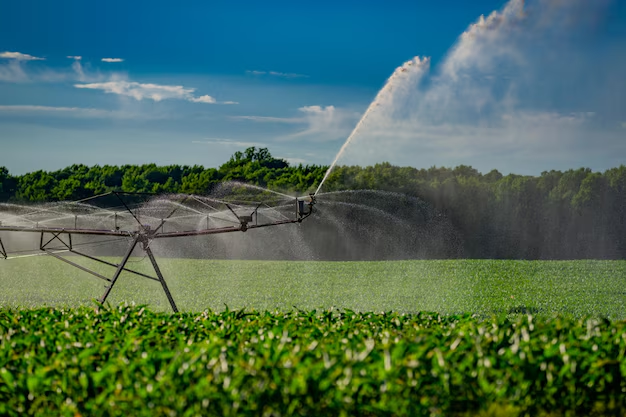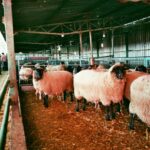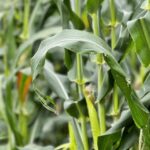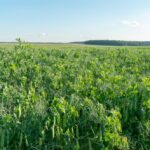Water is one of the most vital resources in farming, yet it is often one of the most wasted. With growing concerns about water scarcity and rising costs, optimizing water use on your farm has never been more critical. The right irrigation equipment can help you distribute water efficiently, minimize waste, and improve crop yields. Here are strategies to help you achieve water optimization using modern irrigation tools.
1. Evaluate Your Farm’s Water Needs
Before investing in irrigation equipment, it’s essential to assess your farm’s specific water requirements. Factors to consider include:
- Crop type: Different crops have varying water demands.
- Soil type: Sandy soils drain quickly, while clay soils retain water longer.
- Climate: Rainfall patterns and temperature influence irrigation needs.
- Field layout: The size, slope, and shape of your fields affect water distribution.
Conducting a water audit or consulting with an irrigation specialist can help you understand your farm’s unique requirements.
2. Choose the Right Irrigation System
Modern irrigation systems come in various types, each suited to specific farming conditions. Here are the most common systems and their benefits:
Drip Irrigation
- How it works: Water is delivered directly to the root zone through a network of tubes and emitters.
- Advantages: Minimizes evaporation and runoff, reduces water usage by up to 50%, and ensures uniform distribution.
- Best for: High-value crops like fruits and vegetables, and fields with irregular shapes.
Sprinkler Irrigation
- How it works: Water is sprayed over crops using rotating or fixed sprinklers.
- Advantages: Covers large areas, suitable for various crop types, and can be automated.
- Best for: Flat or gently sloping fields.
Center Pivot Systems
- How it works: A rotating arm sprays water uniformly across a circular area.
- Advantages: High efficiency, reduced labor, and ideal for large-scale operations.
- Best for: Cereal crops, pastures, and large, open fields.
Surface Irrigation
- How it works: Water flows over the soil surface to reach crops.
- Advantages: Low initial cost and simple to implement.
- Best for: Fields with leveled surfaces and crops like rice.
3. Incorporate Smart Irrigation Technology
Smart irrigation systems use sensors and automation to optimize water use based on real-time data. Examples include:
- Soil Moisture Sensors: Measure soil water levels to determine when and how much to irrigate.
- Weather-Based Controllers: Adjust irrigation schedules based on local weather conditions.
- Flow Meters: Monitor water usage to identify inefficiencies or leaks.
These tools help you make data-driven decisions, ensuring your crops receive the right amount of water without waste.
4. Maintain and Upgrade Equipment
Even the best irrigation systems can lose efficiency without proper maintenance. Regularly check for:
- Leaks and blockages: Inspect pipes, tubes, and sprinklers for damage or clogs.
- Pump performance: Ensure your pump operates at the correct pressure and flow rate.
- Emitter efficiency: Replace worn-out or malfunctioning emitters to maintain uniform distribution.
Consider upgrading outdated equipment with more efficient alternatives, such as low-pressure sprinklers or advanced drip systems.
5. Implement Scheduling and Zoning
Effective irrigation scheduling ensures water is applied at the right time and in the right amounts. Techniques include:
- Time-Based Scheduling: Watering crops during cooler parts of the day to reduce evaporation.
- Soil-Based Scheduling: Using soil moisture data to determine irrigation frequency.
- Crop Zoning: Grouping crops with similar water needs to optimize water distribution.
6. Utilize Renewable Energy for Irrigation
Powering your irrigation system with renewable energy can lower costs and reduce your environmental footprint. Options include:
- Solar-Powered Pumps: Ideal for farms in sunny regions.
- Wind-Powered Systems: Useful in areas with consistent wind patterns.
These systems not only save energy but also enhance the sustainability of your operation.
7. Adopt Water Conservation Practices
Beyond equipment, adopting water-saving practices can further optimize your farm’s water use:
- Mulching: Retains soil moisture and reduces evaporation.
- Contour Farming: Prevents runoff by aligning planting rows with the land’s natural contours.
- Crop Rotation: Improves soil health and reduces water demand.
Optimizing water use on your farm requires a combination of the right irrigation equipment, smart technology, and sustainable practices. By evaluating your farm’s needs, investing in efficient systems, and maintaining your equipment, you can ensure that every drop of water is used effectively. Not only will this save costs, but it will also contribute to the long-term health of your crops and the environment. Start small, monitor progress, and gradually implement changes to achieve a more water-efficient farming operation.
Join 'Farmers Mag' WhatsApp Channel
Get the latest Farming news and tips delivered straight to your WhatsApp
CLICK HERE TO JOIN






